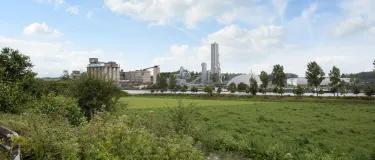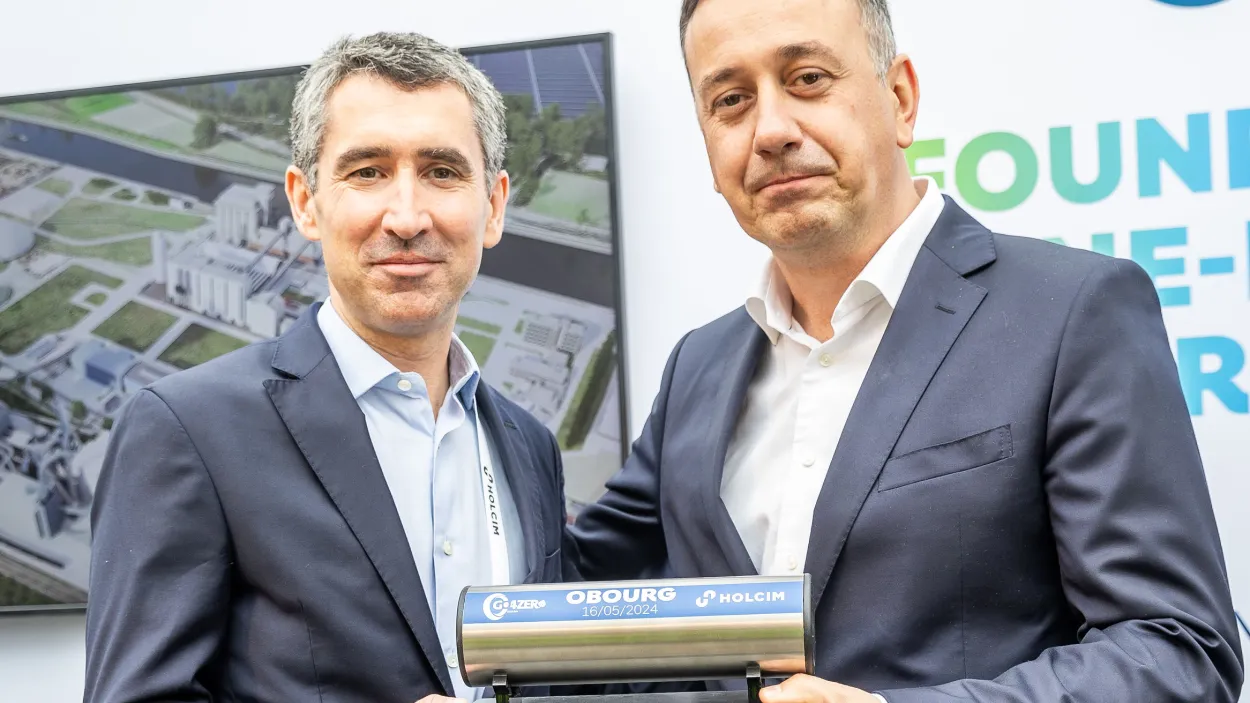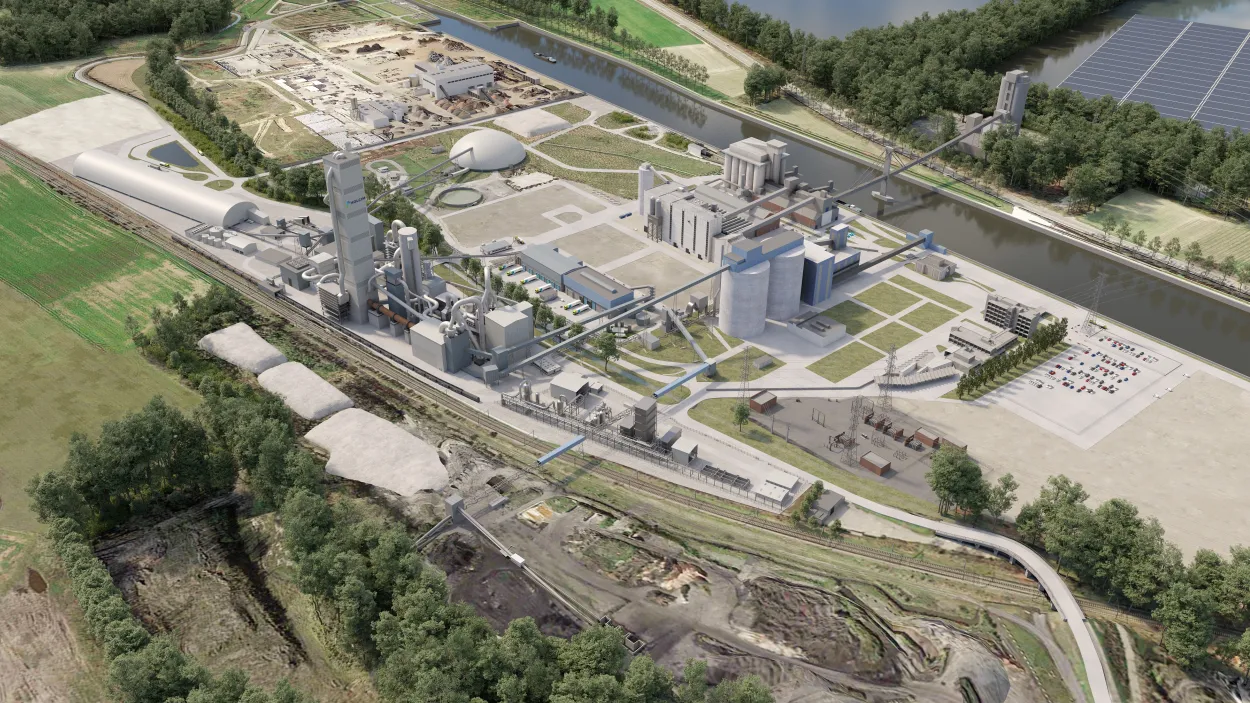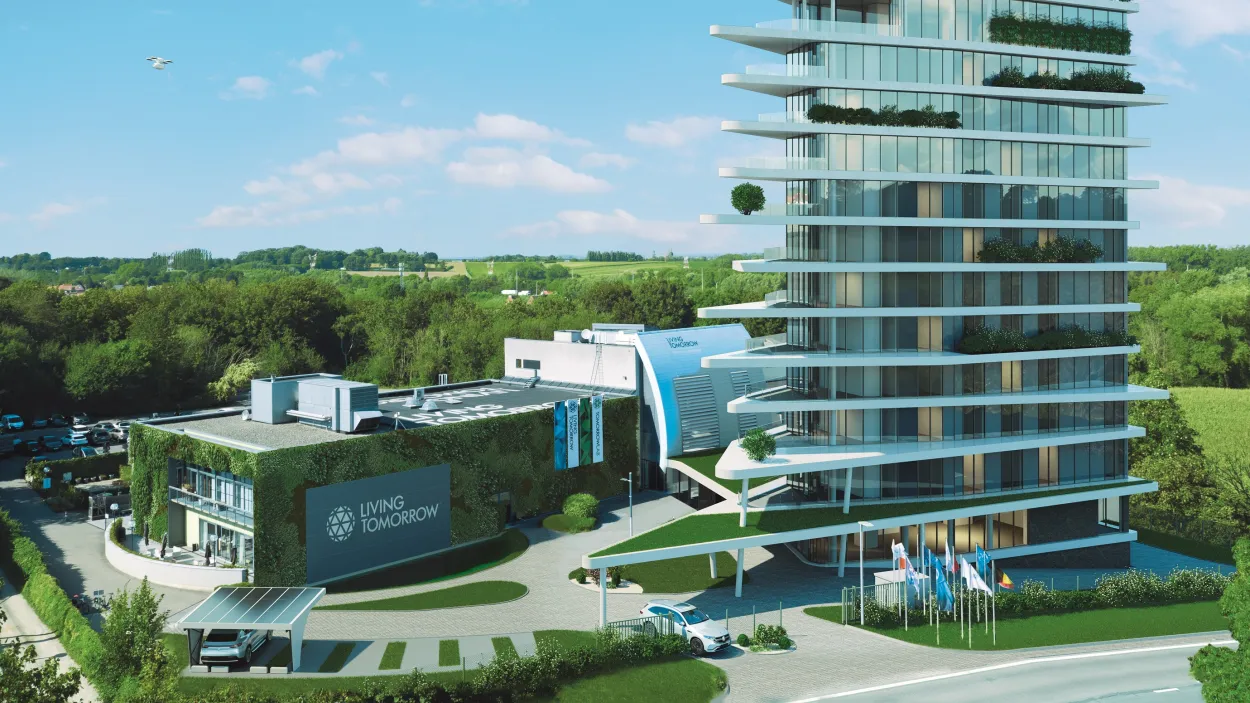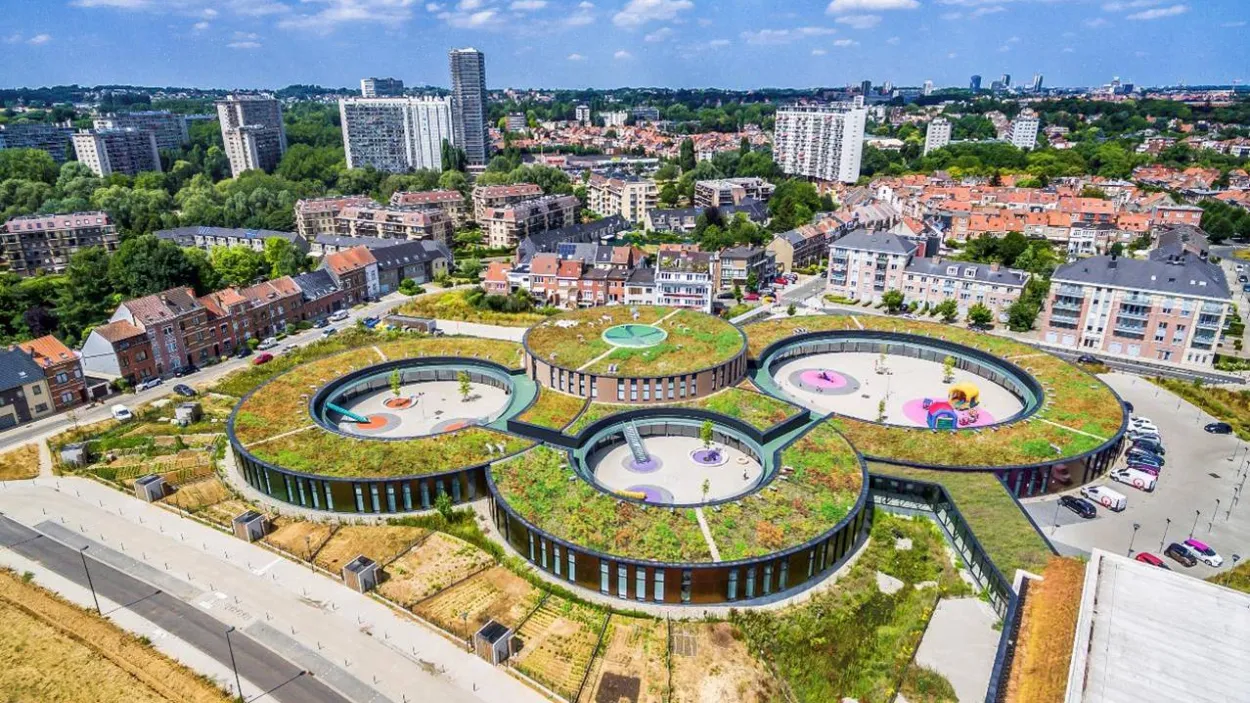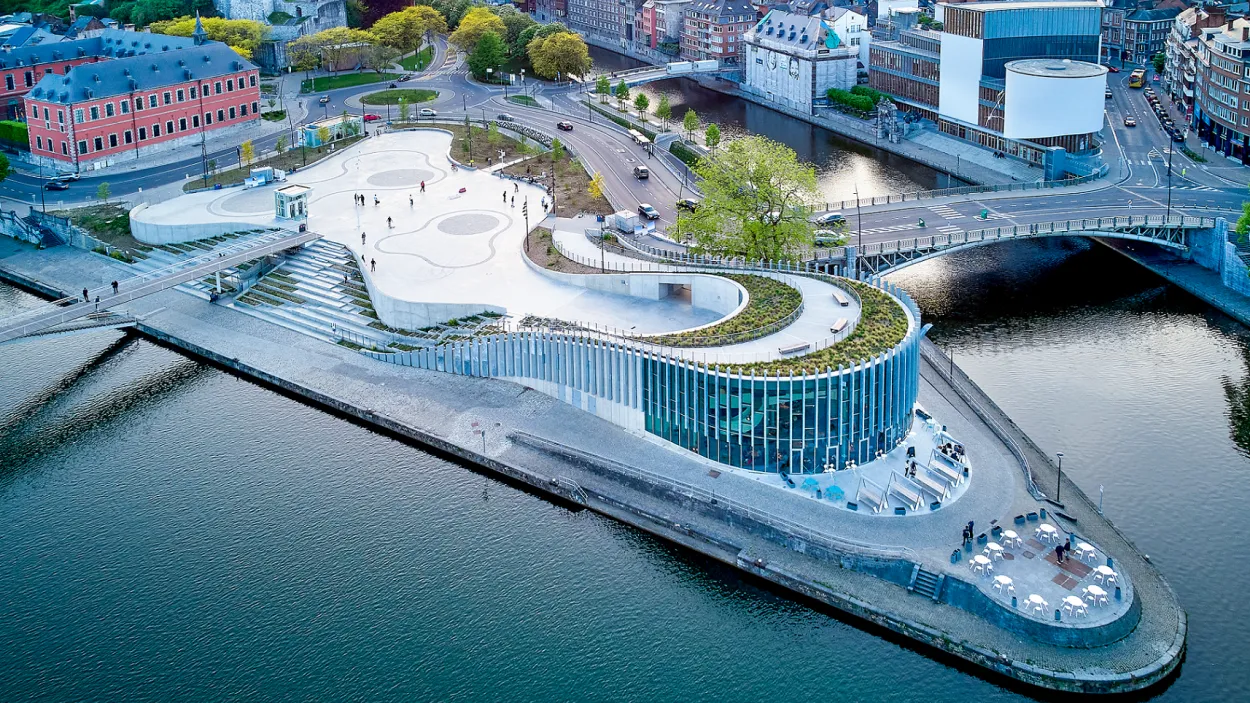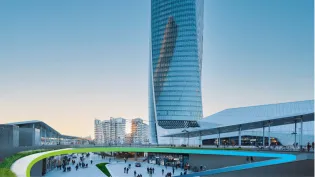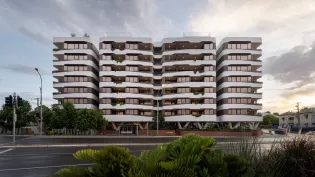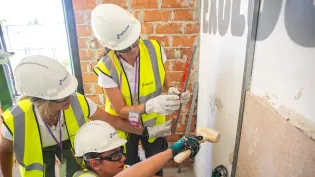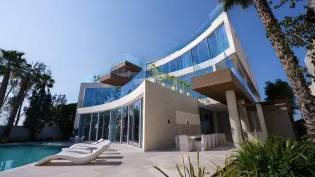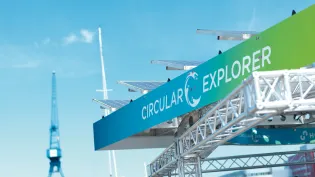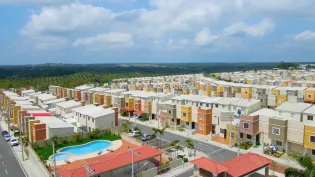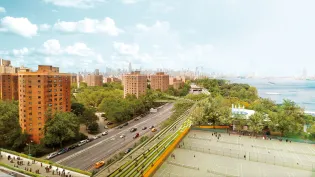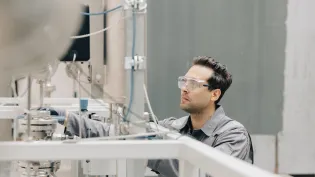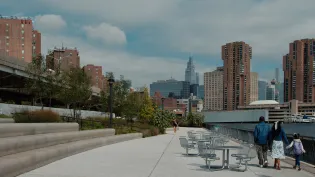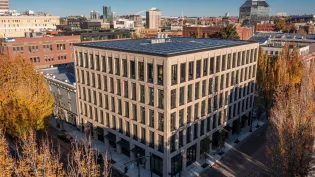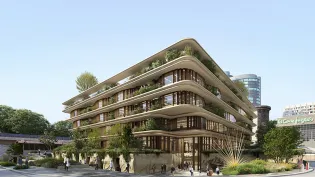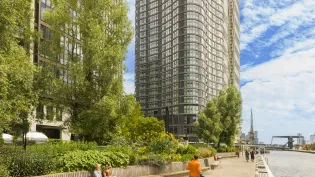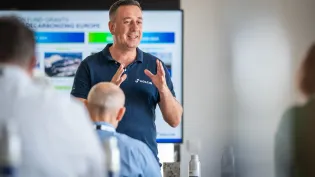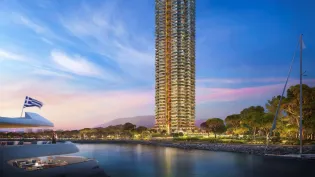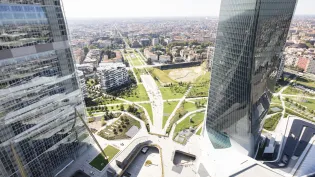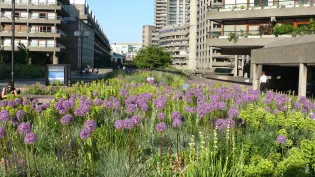Advancing sustainable building in Belgium
Making and scaling impact along the entire construction value chain is key to accelerating a sustainable transformation within our industry. Meet Morgan Malecotte, CEO of Holcim Belgium, who shares his vision, pathway and experiences on decarbonizing building end to end.
What motivates you in your leadership role?
Holcim, with its ambition to be a net-zero company by 2050 and provide sustainable building solutions, is playing a pioneering role in construction. We have the expertise and scale to act decisively, now, for future generations, and this really motivates me in my role. The country’s geopolitical position at the heart of the European Union means that the work we’re doing here – to make construction sustainable from end to end – can influence the bloc as a whole. It’s all about having a significant impact here that we can scale.
Why is it vital to look at construction across its entire lifecycle?
We have to consider all aspects of a building project, from its preliminary design to its operation, which will continue having an environmental impact for several decades after the building is complete. In Belgium, our sustainable building solutions – which will be net zero by 2029 – will significantly reduce the CO2 footprint of the construction phase (embodied emissions).
However, the positive impact will be limited if we don't focus our expertise on limiting the operational emissions of finished buildings as well. We need to construct buildings that are circular, resilient, low-carbon, energy-efficient and smart throughout their life cycles. Making the right choices at the design stage – considering renovations and deconstruction – we can do this.
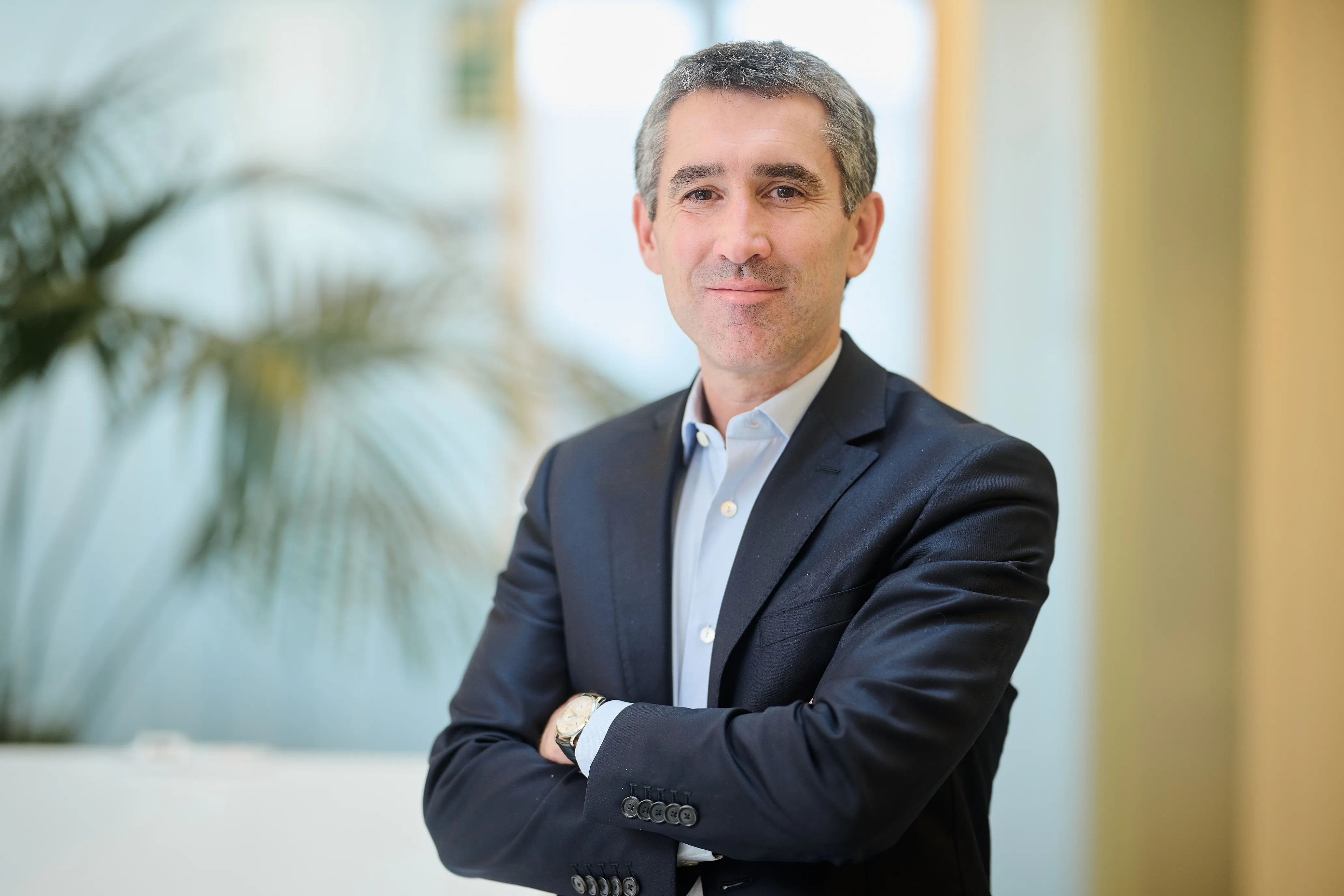
Morgan Malecotte, CEO Holcim Belgium
How is Holcim Belgium working to decarbonize building?
In Belgium we use a number of levers and look at the entire lifecycle of construction projects, starting on the operational side.
Everyone here is proud that we broke ground on a new cement plant in Obourg in May 2024, which will transform cement production in Belgium and Europe as a whole. As part of the GO4ZERO project, this new plant will produce net-zero cement by 2030, by deploying an innovative air-oxyfuel switchable kiln with carbon purification technology. 1.1 million tons of CO2 per year will be captured, then sequestered under the North Sea.
At the groundbreaking ceremony, EU Commissioner for Climate Action, Wopke Hoekstra, mentioned GO4ZERO’s alignment with the European Green Deal’s objective of fully mobilizing industry to achieve climate neutrality by 2050. I’m grateful to our GO4ZERO team for the tremendous work they’ve done so far, our partners, and to the EU for supporting this project.
To help our customers build better with less, we’re constantly expanding our portfolio of solutions, for example with our ECOPact concrete that reduces a project’s embodied emissions by at least 30%. We’re also employing smart design to reduce material use. To show what we can do, we recently 3D-printed a building for bicycles at our Obourg site using Tector® Print mortar. 3D concrete printing combined with smart design allows us to reduce material use by up to 50%, lower CO2 footprint and adapt the structure to a customer’s specific needs.
To address operational emissions in construction we take a holistic approach. Energy efficiency-inspired renovations and retrofitting are increasingly important in Belgium and the EU. With our Compaktuna and Cantillana businesses, for example, we’re helping to extend the lifespan of existing buildings by improving external thermal insulation.
Finally, Holcim is leading the shift to circular construction in key metropolitan areas where we operate around the world, and Belgium is no different. By building new from old using ECOCycle®, we recycle valuable materials and close the material loop in construction.
We’re investing in recycling platforms throughout the country to expand urban mining and recycle materials for the benefit of the whole construction value chain. Here Holcim Belgium is a pioneer. We created the Geocycle waste management platform 30 years ago, and it now serves as the blueprint for our industry worldwide. Our recent acquisition of company Mark Desmedt strengthens our position in the Brussels market.

3D-printed building for bicycles at the Obourg site using Tector® Print mortar
What are some notable Belgian projects with Holcim inside?
Holcim has been chosen as the partner of choice by our customers for many notable construction projects in Belgium. The stunning and sustainable new Living Tomorrow Innovation Campus in Vilvoorde has our ECOPact low-carbon concrete and Hydromedia permeable concrete at its core.
The world’s first artificial energy island, Princess Elisabeth Island, is one of our country’s flagship renewable energy projects. Located off the Belgian coast in the North Sea, the island will serve as an electricity hub that will give our country access to offshore wind energy. Through our partner De Rycke, we are currently supplying ECOPlanet cement for the construction of its 23 caissons, reducing the CO2 footprint by at least 30%.
Through our Elevate business, we are making buildings sustainable in use across the country. For example, Les Trèfles school in Anderlecht, Belgium is a Passive House building, a model for sustainable design and superior energy performance. For the roof, the architects specified Elevate’s insulating UltraPly™ TPO roofing system to drive maximum energy efficiency while enabling an 7000m2 green roof. Located near Antwerp, the Nike European Logistics Campus is a shining example of sustainable innovation. The chosen roofing membrane, Elevate UltraPly™ TPO, was chosen for its durability and versatility, providing excellent weather resistance and optimal energy management.
One of my personal favorites is the stunning La Confluence, which has transformed the neglected district of 'Le Grognon' in Namur since 2021. Elevate Master Contractor Protoitures skillfully sealed the roof of La Confluence using RubberGard LSFR EPDM membrane. The solution was chosen for its outstanding durability and flexibility, which allowed the uniquely designed site to be well waterproofed with a reliable roofing material.
How are you helping inspire sustainable building across Belgium?
We work with our employees to help them master new fields of expertise and become ambassadors of change. Beyond that, we need to amplify the visibility of noteworthy projects to show all members of the value chain what is possible, which helps us bring in new partners as we drive sustainable building at scale.
In addition, we need to look beyond our industry and encourage cross-sectoral collaboration. With GO4ZERO, we had our first successful experience of making this happen. Since all parts of the value chain and infrastructure for this ambitious project had to be created brand new for carbon capture and storage, this meant that all companies involved had to collaborate and co-create new value chains and new business models.
Since Carbon Capture and Storage (CCS) is still a maturing market, the companies that needed to collaborate on GO4ZERO had to move away from their traditional ways of working and collaborate with industries and sectors they hadn’t worked with before. We succeeded by bringing a collaborative spirit to co-create, and find solutions with a win-win mentality.
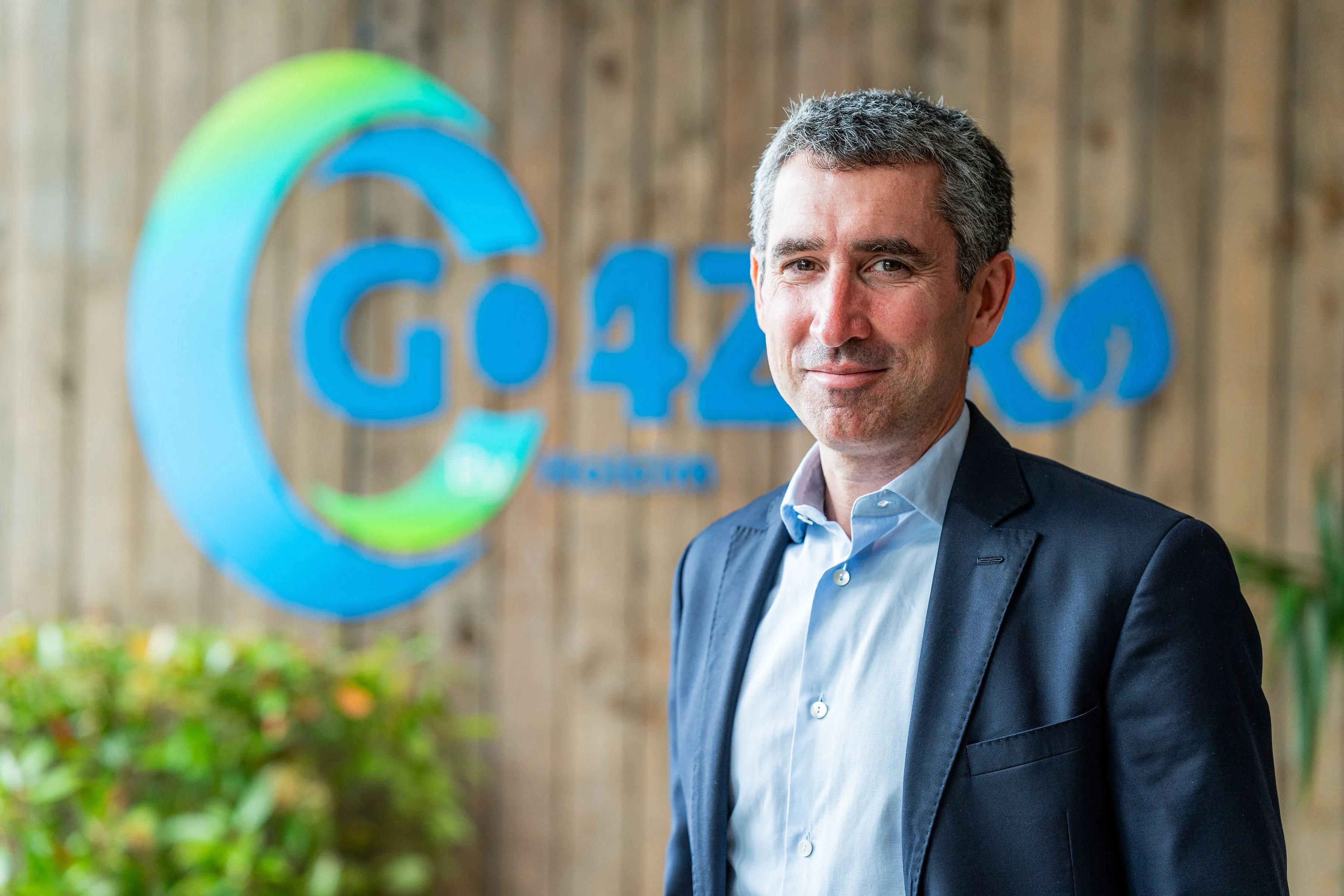
Morgan Malecotte, CEO Holcim Belgium





